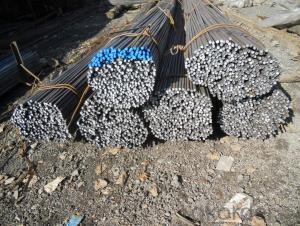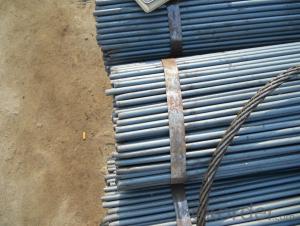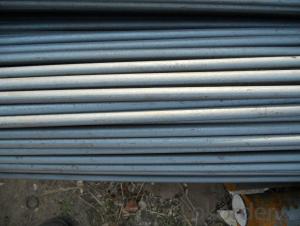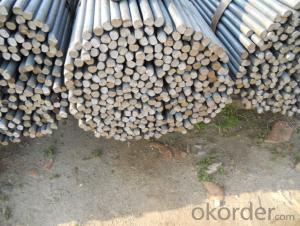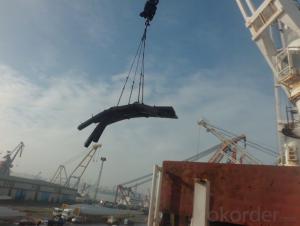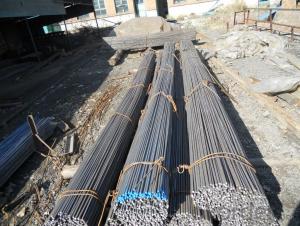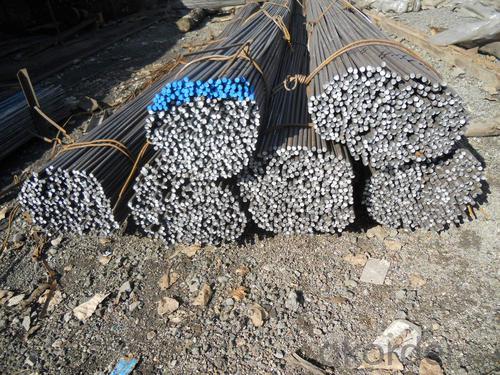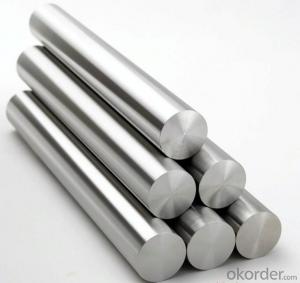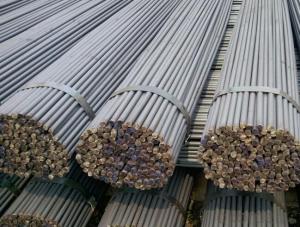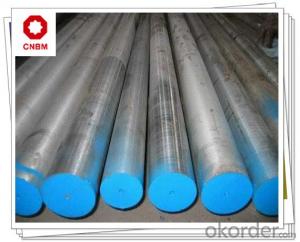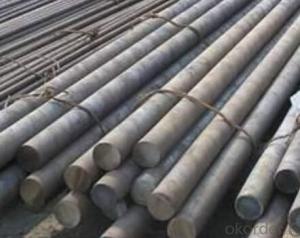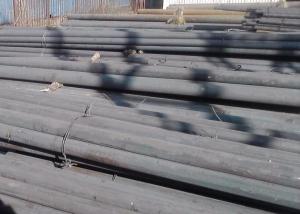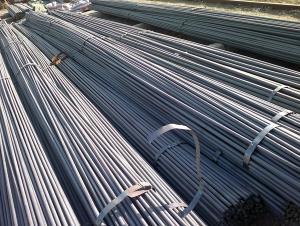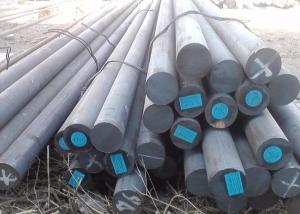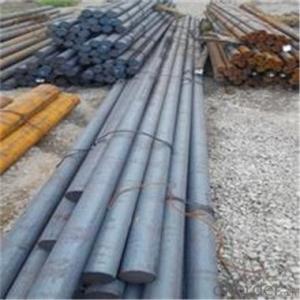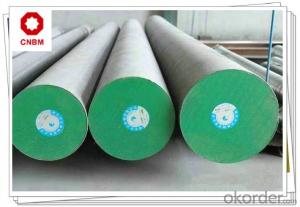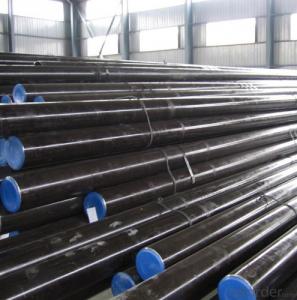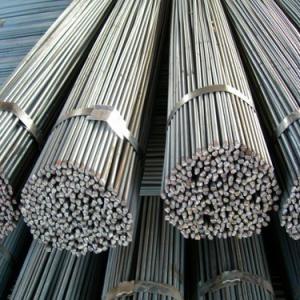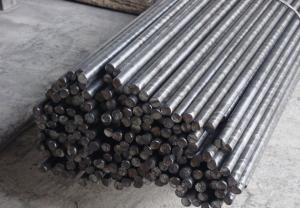American Standard High Quality Round Bar
- Loading Port:
- China Main Port
- Payment Terms:
- TT or LC
- Min Order Qty:
- -
- Supply Capability:
- -
OKorder Service Pledge
OKorder Financial Service
You Might Also Like
Product Description:
OKorder is offering high quality American Standard High Quality Round Bar at great prices with worldwide shipping. Our supplier is a world-class manufacturer of steel, with our products utilized the world over. OKorder annually supplies products to European, North American and Asian markets. We provide quotations within 24 hours of receiving an inquiry and guarantee competitive prices.
Product Applications:
American Standard High Quality Round Bar are ideal for structural applications and are widely used in the construction of buildings and bridges, and the manufacturing, petrochemical, and transportation industries.
Product Advantages:
OKorder's American Standard High Quality Round Bar are durable, strong, and resist corrosion.
Main Product Features:
· Premium quality
· Prompt delivery & seaworthy packing (30 days after receiving deposit)
· Corrosion resistance
· Can be recycled and reused
· Mill test certification
· Professional Service
· Competitive pricing
Specifications of American Standard High Quality Round Bar
1. Grade: ASTM A36; AISI 1006-1025
2. Sizes: Diameter: 6mm-150mm; Length: 6m, 9m, 12m or as customer’s request
3. Tolerance: Within ±5% for weight; ±2mm for diameter
4. Type: Mild steel; Low carbon steel
5. Shape: Round bar, solid bar of steel with circular section
6. Technique: Hot rolled or cold drawn
7. Mass: Mass (kg/m) = Diameter (mm) × Diameter (mm) × 0.00617
Usage and Applications of American Standard Round Bar
1. American standard is the most common form of steel as its price is relatively low while it provides material properties that are acceptable for many applications. American standard round bar is often used where large amounts of steel need to be formed, for example as structural steel.
2. And we can use this kind of product on the performance of the mechanical parts if the demand is not very high.
3. Steel round bar is used in construction and a large number of architectural and engineering structures.
4. Some special round bar can be used for automotive engine and transmission components, bearing, rails machine tools and wire rope.
Packaging & Delivery of American Standard Round Bar
Packaging Detail: All goods are packed in bundle with steel strips and shipped by break bulk vessel or container (depend on target market and different ports)
Delivery Detail: 45 days
Trade terms: FOB, CFR, CIF
MOQ: 25 tons per specification; we can negotiate the quantity if the specification is normal or we have stock of one specification.
Weight: The price invoicing on theoretical weight basis or actual weight basis depends on customer’s request.
Shipment: The shipment of bulk break or container is depends on customer’s request and the situation of the port of destination.
Documents given: Full set of original clean on board bill of lading; Original signed commercial invoice; Original packing list; Policy of insurance; Certificate of origin and what the target market needs.
Production Flow of American Standard Round Bar
The common processes are preheated forging quenching, dual refinement solution process, cooling quenching and isothermal quenching. We use heat treatment for dual refinement solution process.
Quality Assurance of American Standard Round Bar
1. We will strictly inspect our production that we sold according to the customer’s request.
2. Quality should be in conformity with the specification of the manufacturer. Quantity and packing conditions should be in conformity with the term in the contract.
3. Should the packing found damaged, the buyer has the right to claim to the seller.
FAQ:
Q1: Why buy Materials & Equipment from OKorder.com?
A1: All products offered byOKorder.com are carefully selected from China's most reliable manufacturing enterprises. Through its ISO certifications, OKorder.com adheres to the highest standards and a commitment to supply chain safety and customer satisfaction.
Q2: How do we guarantee the quality of our products?
A2: We have established an advanced quality management system which conducts strict quality tests at every step, from raw materials to the final product. At the same time, we provide extensive follow-up service assurances as required.
Q3: How soon can we receive the product after purchase?
A3: Within three days of placing an order, we will begin production. The specific shipping date is dependent upon international and government factors, but is typically 7 to 10 workdays.
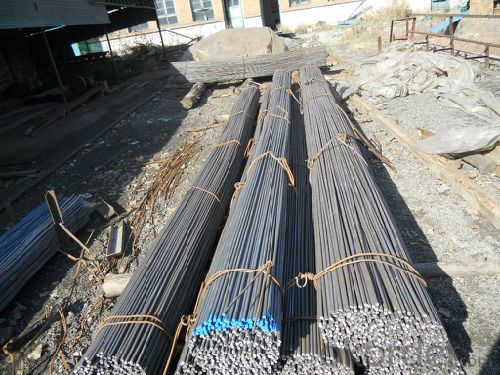
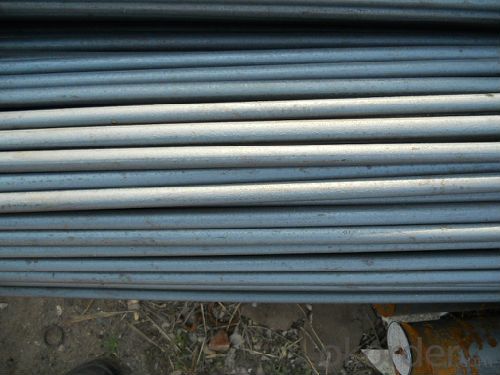
- Q: Are steel round bars available in different colors?
- No, steel round bars are typically available in a silver or gray color as they are made from alloyed iron and carbon.
- Q: How do you calculate the weight of a steel round bar based on its length and volume?
- In order to determine the weight of a steel round bar based on its length and volume, it is necessary to have knowledge of the steel's density. The density denotes the mass per unit volume of the material. The weight can be calculated using the following formula: Weight = Volume × Density To begin, one must calculate the volume of the steel round bar. The volume of a cylinder, which is the shape of a round bar, can be determined using the following formula: Volume = π × (Radius)^2 × Length The value of π is a mathematical constant approximately equal to 3.14, and Radius represents the radius of the round bar. Once the volume is obtained, it can be multiplied by the density of the steel to find the weight. It is important to note that the density of steel may vary depending on the specific type being used. For instance, mild steel has a density of approximately 7850 kg/m³. Therefore, the weight of the steel round bar can be calculated as: Weight = Volume × Density For example, let us consider a steel round bar with a length of 1 meter and a radius of 0.5 meters. To calculate the weight, we first need to determine the volume: Volume = π × (0.5)^2 × 1 Volume = 0.7854 m³ Next, we multiply the volume by the density of steel: Weight = 0.7854 m³ × 7850 kg/m³ Weight = 6171.79 kg Hence, the weight of the steel round bar would be approximately 6171.79 kg.
- Q: How do steel round bars compare to other materials in terms of strength?
- Steel round bars are known for their exceptional strength compared to other materials. Steel has a high tensile strength, which means it can withstand heavy loads and resist deformation. In comparison to materials like aluminum or plastic, steel round bars offer superior strength and durability, making them ideal for applications that require structural integrity and stability.
- Q: What is the difference between a hot-rolled and a peeled steel round bar?
- The main difference between a hot-rolled and a peeled steel round bar lies in their manufacturing processes. A hot-rolled steel round bar is formed by heating a metal billet or ingot to a high temperature and then rolling it into its final shape and size. This process results in a rougher surface texture and a larger diameter tolerance. On the other hand, a peeled steel round bar undergoes an additional step called peeling after the hot-rolling process. In this step, the outer surface of the bar is removed by rotating it against a stationary cutting tool. This process improves the surface finish and dimensional accuracy of the round bar, resulting in a smoother and more precise product. In summary, while both hot-rolled and peeled steel round bars are commonly used in various industries, the peeled bar offers superior surface finish and dimensional accuracy due to the additional peeling step in its manufacturing process.
- Q: What are the different testing methods used for steel round bars?
- There are several testing methods used for steel round bars to ensure their quality and suitability for various applications. These methods include: 1. Visual Inspection: This is the initial step of testing, where the bars are visually examined for any visible defects, such as cracks, surface irregularities, or improper dimensions. 2. Dimensional checks: Steel round bars undergo dimensional checks to verify their diameter, length, and straightness. Precise measurements are essential to meet the specified requirements. 3. Ultrasonic Testing: Ultrasonic waves are passed through the round bars to detect internal defects, such as cracks, voids, or inclusions. This method helps identify potential weaknesses that may affect the structural integrity of the bars. 4. Magnetic Particle Inspection: This method uses a magnetic field and magnetic particles to detect surface and near-surface defects like cracks, seams, or laps. It is particularly useful in ferromagnetic materials such as steel. 5. Dye Penetrant Inspection: This technique involves applying a colored dye to the surface of the round bars and then wiping it off. The dye penetrates into any surface cracks or defects, making them visible under ultraviolet light. 6. Hardness Testing: This test measures the hardness of the steel round bars using methods like Rockwell or Brinell scales. It helps determine the material's ability to withstand external forces and ensures it meets the required hardness specifications. 7. Tensile Testing: Tensile strength testing is conducted to measure the maximum load a steel round bar can bear before it breaks. This test helps evaluate the material's strength and ductility. 8. Chemical Analysis: Chemical analysis is performed to determine the composition of the steel round bars, including the presence of elements like carbon, manganese, sulfur, phosphorus, and others. It ensures that the steel meets the required chemical composition standards. These testing methods are crucial in ensuring the quality, reliability, and compliance of steel round bars with industry standards and customer requirements. It is essential to perform a combination of these tests to ensure the overall quality and performance of the steel round bars in different applications.
- Q: What is the weight of a steel round bar?
- The weight of a steel round bar depends on its dimensions, specifically its diameter and length. To calculate the weight, you can use the formula: weight = volume × density. To find the volume of the steel round bar, you can use the formula for the volume of a cylinder: volume = π × (diameter/2)^2 × length, where π is a mathematical constant approximately equal to 3.14159. The density of steel varies depending on the type and grade, but it is typically around 7.85 grams per cubic centimeter (g/cm³) or 7850 kilograms per cubic meter (kg/m³). By substituting the appropriate values into the formula, you can calculate the weight of the steel round bar in the desired unit (grams, kilograms, pounds, etc.).
- Q: How do you calculate the weight of a steel round bar?
- To calculate the weight of a steel round bar, you can use the formula: Weight = (Diameter^2 / 4) * Length * Density In this formula, the Diameter refers to the diameter of the round bar, Length represents the length of the bar, and Density is the density of the steel material. First, you need to measure the diameter of the steel round bar accurately. Then, square the diameter by multiplying it by itself. Divide the result by 4. This will give you the cross-sectional area of the round bar. Next, multiply the cross-sectional area by the length of the bar. Finally, multiply this value by the density of the steel material. The density of steel is typically around 7850 kg/m^3. The result of this calculation will give you the weight of the steel round bar in grams or kilograms, depending on the units used for the length and density.
- Q: What is the difference between strip steel and round steel? Where are they mainly used?
- Strip steel is a kind of narrow and long steel plate produced by various rolling mills to meet the needs of industrial production of various metal or mechanical products in different industrial sectors. Strip steel, also known as steel strip, is within 1300mm in width, and the length varies slightly according to the size of each roll. The strip is supplied in general, and has the advantages of high dimensional accuracy, good surface quality, easy processing and material saving. Same as steel plate, strip steel is divided into two kinds of ordinary strip steel and high quality strip steel according to the material used, and two kinds of hot-rolled strip steel and cold rolled strip steel according to processing method.Strip steel is widely used in the production of welded steel pipe, made of cold formed steel billet, manufacturing bicycle frame, rim, clamp, gasket, spring, saw blades, hardware and blades.
- Q: How do you calculate the bending stress in a steel round bar?
- To calculate the bending stress in a steel round bar, you need to consider the applied load and the properties of the bar. The bending stress is a measure of the internal forces that develop within the bar when it is subjected to an external load that causes it to bend. The formula used to calculate the bending stress is: σ = (M * c) / I Where: - σ represents the bending stress (in units of force per unit area, such as pascals or psi) - M is the bending moment, which is the product of the applied load and the distance from the neutral axis of the bar to the point of interest. It is typically measured in units of force multiplied by distance (e.g., N·m or lb·ft). - c is the distance from the neutral axis to the outermost fiber of the bar. It is also known as the distance to the extreme fiber or the radius of the bar. - I is the moment of inertia, which represents the resistance of the bar to bending. It is a property that depends on the shape and dimensions of the cross-section of the bar. To calculate the moment of inertia for a round bar, the formula is: I = (π * d^4) / 64 Where: - I represents the moment of inertia - π is a mathematical constant (approximately 3.14159) - d is the diameter of the round bar Once you have determined the bending stress using the above formulas, you can compare it to the yield strength of the steel material to assess the safety factor and determine if the bar will undergo permanent deformation or failure.
- Q: What are the different types of steel round bars used in the manufacturing of cutting tools?
- There are several types of steel round bars commonly used in the manufacturing of cutting tools. Some of the most common types include high-speed steel (HSS), tool steel, carbon steel, and stainless steel. Each type has its own unique properties and characteristics that make it suitable for specific cutting applications. For example, HSS is known for its high hardness, toughness, and heat resistance, making it ideal for high-speed cutting operations. Tool steel, on the other hand, is known for its exceptional wear resistance and ability to retain sharp edges, making it suitable for cutting tools that require long-lasting performance. Carbon steel is often used for general-purpose cutting tools due to its affordability and good balance of hardness and toughness. Lastly, stainless steel is chosen for cutting tools that require excellent corrosion resistance, making it suitable for applications in harsh environments or when working with corrosive materials.
Send your message to us
American Standard High Quality Round Bar
- Loading Port:
- China Main Port
- Payment Terms:
- TT or LC
- Min Order Qty:
- -
- Supply Capability:
- -
OKorder Service Pledge
OKorder Financial Service
Similar products
Hot products
Hot Searches
Related keywords
